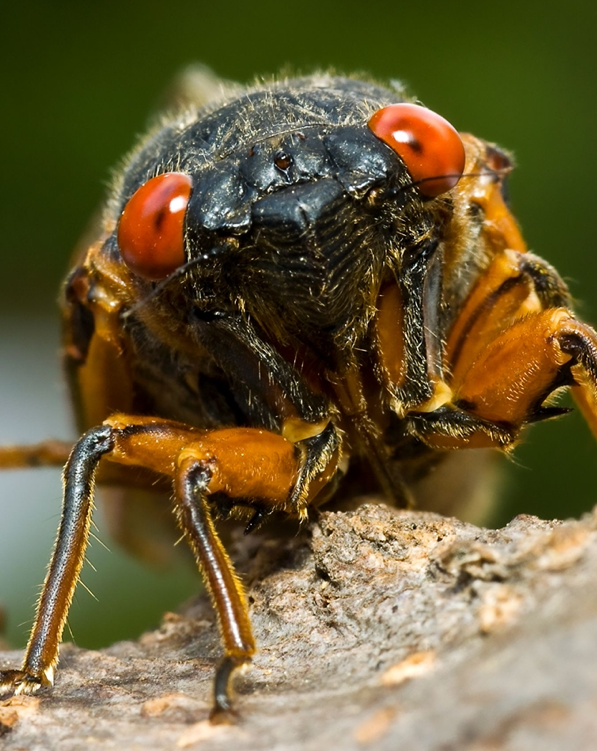
Image credit: Getty Images
Summer is coming, and so are the cicadas. In addition to the annual cicadas, parts of Virginia will also see the emergence of the Brood X periodical cicadas this year. To celebrate this momentous occasion 17 years in the making, we put together a list of interesting science facts about the big bugs.
1. Periodical cicadas only emerge from the ground to mate. They die right afterward!
2. It's Brood TEN, not Brood X. Sorry y'all, it's a Roman numeral, not a letter.
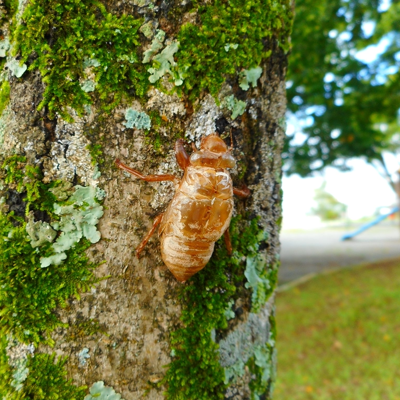
Image credit: Getty Images
3. Cicadas essentially "hulk" out of their exoskeleton from their nymph phase. The shell they leave behind is called an exuvia!
4. Even though they lived underground, periodical cicadas can track years passing by the amount of nutrients in the sap they drink from tree roots. On occasion, however, they do get their timing wrong. #ItHappens
5. Brood X may be in decline. As humans continue to expand infrastructure and disrupt the soil the nymphs live in, it leaves fewer and fewer spaces for these periodical cicadas to emerge.
6. Cicadas are really loud, around 100 decibels. That’s louder than a motorcycle!
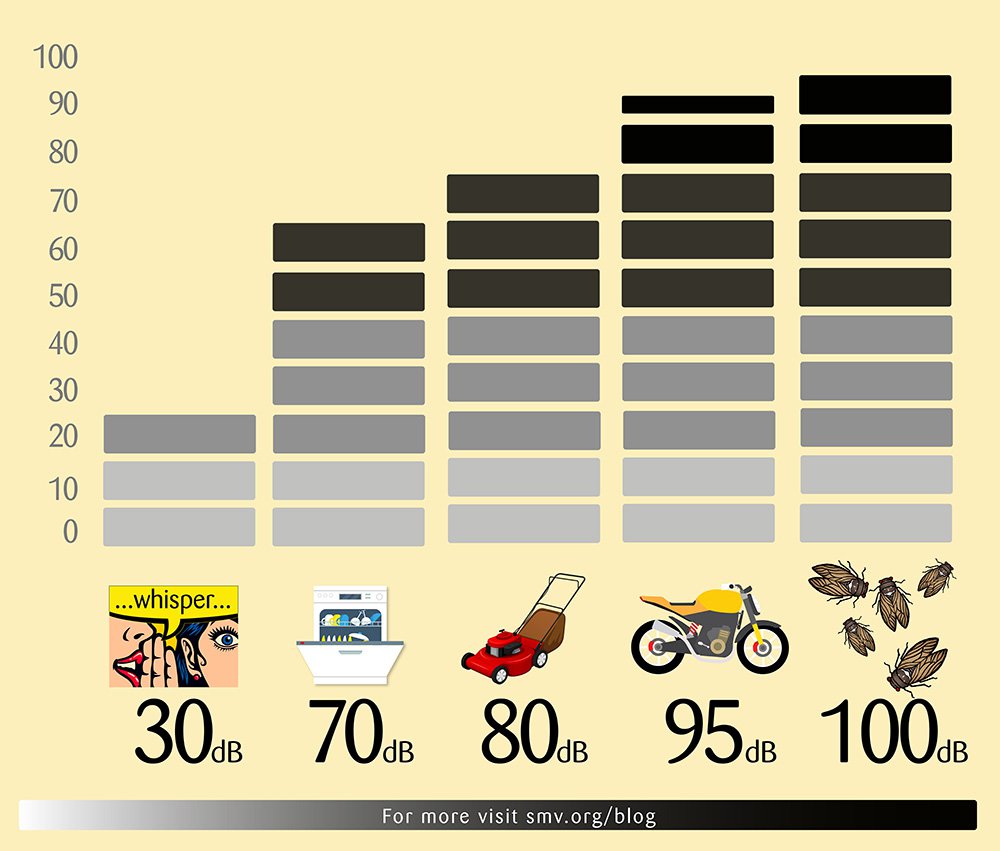
7. You can become a citizen scientist by tracking periodical cicadas using the Cicada Safari app! Because they only emerge every 17 years, scientists need everyone’s help gathering images and information during the approximately three months they are above ground. https://cicadasafari.org/
8. Brood X is actually three different species of cicada: Magicicada septendecim, Magicicada cassinii, and Magicicada septendecula. Each species has a unique mating call.
9. You can eat cicadas, but the males are essentially hollow. Cicadas are best enjoyed when they are still soft and white from leaving their nymph stage. Just so you know, they are reported to taste like cold canned asparagus. #JustBecauseYouCan #DoesntMeanYouShould
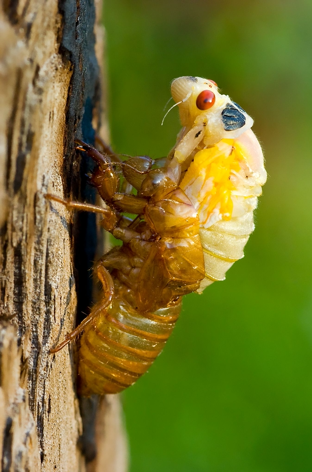
Image credit: Getty Images
10. Contrary to anything Bob Dylan wrote in the song "Day of Locusts,” cicadas are not locusts. Cicadas are more closely related to stink bugs and bed bugs than locusts. By the way, Dylan also said "The sun's not yellow -- it's chicken" so consider your source carefully. #JustSaying #TheLocustSangToMe
11. Female cicadas use their ovipositor to lay their fertilized eggs in trees. This specialized appendage is made of two serrated sides that are reinforced with metal and work like knives to cut into the tree and make space to lay their eggs.
12. Just like crawdads, cicadas can build chimney-like towers, called turrets, in wetter areas that indicate where they will emerge from the ground. They do this to keep water out of their holes. The turrets can get as tall as 12 inches!
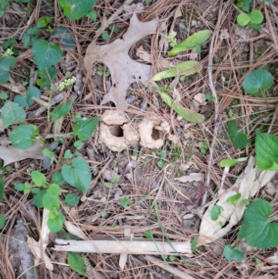
Image credit: Getty Images
13. Brood X cicadas emerge when the soil reaches 64 °F and often following a heavy rainstorm that soaks the ground. How precise!
14. While the first record of Brood X periodical cicadas is from William Bradford, second governor of Plymouth Colony, periodical cicadas were well known to Native Americans living in the area long before white settlers wrote about them. In his history of Plymouth Plantation, Bradford wrote that they “... made such a constant yelling noise as made all the woods ring of them, and ready to deaf the hearers.”
15. Periodical cicadas use a tactic called predator satiation. The first to emerge from the ground are more likely to be eaten by predators, but their numbers soon become so overwhelming that many of them still get to mate.
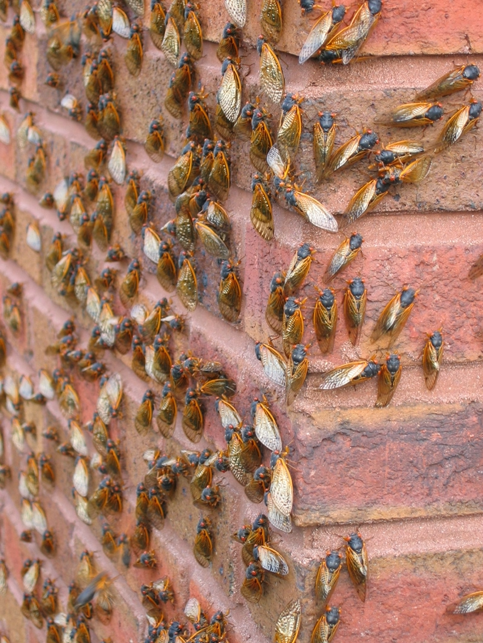
Image credit: Getty Images
16. Male cicadas will gather in mating groups known as leks and call out to females together. If you hear cicadas on your mid-day walk (most cicadas sing during the day -- what you hear on summer nights are more likely crickets or katydids), just imagine the males all yelling, “Hey, baby, hey!”
17. Only male cicadas “sing.” Males will call out to females using specialized body parts called tymbals on the sides of their abdomen and the females respond by flicking their wings to alert the male to their location. #SongAndDance
To learn more about cicadas, check out this Richmond Times-Dispatch article.
BONUS FACT: They are actually kind of cute. Just look at the widdle face! Hey, we’re bug lovers … what can we say?!


